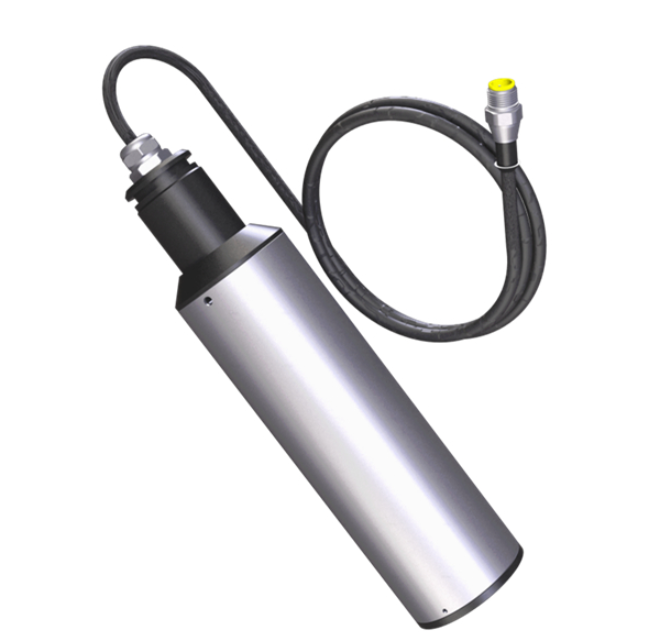Crystal-clear drinking water is a fundamental requirement for human health and well-being. To ensure the highest quality standards, water treatment facilities, and environmental monitoring agencies rely on advanced technologies like digital drinking water turbidity sensors.
These innovative devices play a crucial role in accurately measuring the concentration of suspended particles in water, helping to maintain pristine water quality and safeguard public health.
In this blog post, we will delve into the world of digital drinking water turbidity sensors, exploring their working principles, key features, and the benefits they bring to water treatment processes.
Understanding Digital Drinking Water Turbidity Sensors:
Digital drinking water turbidity sensors are cutting-edge instruments that employ optical measurement techniques to assess the turbidity levels in the water.
By emitting a beam of light and analyzing its scattering and absorption properties within the water sample, these digital drinking water turbidity sensors can determine the concentration of suspended particles accurately.
This information is crucial for water treatment plants, as it helps them evaluate the effectiveness of their filtration systems and identify any potential contaminants.
How Digital Drinking Water Turbidity Sensors Work?
The working principle of digital drinking water turbidity sensors revolves around light scattering and absorption phenomena. These sensors typically utilize an LED light source that emits light at a specific wavelength, which passes through the water sample.
Photodetectors placed at a certain angle (BOQU’s digital drinking water turbidity sensor is 90°) from the light source detect the scattered light. The intensity of the scattered light is then measured, and algorithms are used to calculate the turbidity level based on this data.
Digital drinking water turbidity sensors often employ a nephelometric measurement method, which measures the scattered light at a 90-degree angle from the incident light beam. This method provides more accurate results as it reduces interference from other factors such as color and UV absorption.
Key Features And Benefits Of Digital Drinking Water Turbidity Sensors:
Digital drinking water turbidity sensors offer several essential features and benefits that contribute to improved water treatment processes:
- Enhanced Accuracy and Sensitivity:
These digital drinking water turbidity sensors provide highly precise and sensitive measurements, allowing water treatment facilities to detect even slight changes in turbidity levels and promptly address any potential issues.
- Real-Time Monitoring:
Digital turbidity sensors offer real-time monitoring capabilities, enabling water treatment operators to continuously assess water quality and make necessary adjustments to the treatment process.
- Easy Integration and Automation:
These sensors can be seamlessly integrated into existing water treatment systems, allowing for automated control and optimizing overall operational efficiency.
- Remote Monitoring and Alarming:
Many digital turbidity sensors offer remote monitoring options, allowing operators to monitor water quality parameters from a central control room. Additionally, they can set up automatic alarms to alert them of any abnormal turbidity levels, ensuring timely intervention.
Drinking Water Turbidity Sensor In The Digital Era:
In the digital era, advancements in technology have revolutionized various industries, including water quality monitoring. With the integration of digital solutions, the field of drinking water quality assessment has witnessed significant improvements.
Enhanced Monitoring with Digital Solutions:
In the digital era, water quality monitoring has become more efficient and reliable. The integration of digital solutions allows for real-time data collection, analysis, and remote monitoring. These advancements enable quick detection of changes in water quality, facilitating proactive measures to ensure safe drinking water for communities.
1) Integrated Low-Range Turbidity Sensor With Display:
This integrated turbidity sensor is specifically designed for low-range turbidity monitoring. It utilizes the EPA principle 90-degree scattering method, which ensures accurate and reliable measurements in low turbidity ranges. The data obtained from this sensor is stable and reproducible, providing water treatment facilities with confidence in their monitoring processes. Additionally, the digital drinking water turbidity sensor offers simple cleaning and maintenance procedures, making it easy to use and maintain.
Key features of the Integrated Low Range Turbidity Sensor With Display:
- EPA principle 90-degree scattering method for low-range turbidity monitoring.
- Stable and reproducible data.
- Easy cleaning and maintenance.
- Protection against power polarity reverses connection and RS485 A/B terminal wrong connection power supply.
2) BOQU’s Digital Drinking Water Turbidity Sensor:
IoT Digital Turbidity Sensor BOQU’s IoT Digital Turbidity Sensor, based on the infrared absorption scattered light method and ISO7027 principles, offers continuous and accurate detection of suspended solids and sludge concentration. Its notable features include:
- Measurement accuracy:
The sensor’s infrared double-scattering light technology ensures precise measurements of suspended solids and sludge concentration, unaffected by chroma.
- Self-cleaning function:
Depending on the usage environment, the digital drinking water turbidity sensor can be equipped with a self-cleaning function, ensuring data stability and reliable performance.
- Built-in self-diagnosis function:
The sensor includes a self-diagnosis function, enhancing its reliability by detecting any potential issues or malfunctions.
- Simple installation and calibration:
The sensor is designed for easy installation and calibration, simplifying the setup process for users.
The Application of IoT in Water Quality Monitoring:
In the digital era, the Internet of Things (IoT) plays a significant role in water quality monitoring. With IoT applications, data collected by sensors can be transmitted to analyzers and then made accessible to users via smartphones or computers. This seamless flow of information enables efficient data management, analysis, and decision-making.
Applications Of Digital Drinking Water Turbidity Sensors:
Digital drinking water turbidity sensors find wide-ranging applications across various industries and sectors:
Water Treatment Plants:
These digital drinking water turbidity sensors are indispensable in water treatment facilities to monitor and maintain the efficiency of filtration systems, ensuring the delivery of clean and safe drinking water.
Environmental Monitoring:
Turbidity sensors play a vital role in monitoring the turbidity levels in natural water bodies like lakes, rivers, and oceans. This data helps assess water quality, ecological health, and the impact of human activities on aquatic environments.
Industrial Processes:
Industries such as pharmaceuticals, food, and beverage, and manufacturing rely on digital turbidity sensors to monitor the quality of process water, ensuring compliance with regulatory standards and enhancing product quality.
Final words:
BOQU’s digital drinking water turbidity sensors offer a groundbreaking solution for maintaining crystal-clear waters and ensuring the highest quality standards in drinking water. By employing advanced optical measurement techniques, these digital drinking water turbidity sensors provide accurate and real-time monitoring of turbidity levels, enabling water treatment facilities to take proactive measures to address any water quality issues.
With their enhanced accuracy, sensitivity, and remote monitoring capabilities, digital drinking water turbidity sensors offer a multitude of benefits, including improved operational efficiency, automated control, and early detection of potential contaminants.
Post time: May-22-2023





